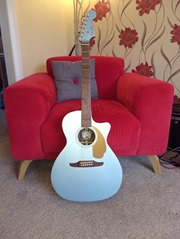These are some strategies for coping with anxiety which I have been learning about in counselling sessions which I have been doing over the last few weeks. For me anxiety manifests itself as a tightness in the chest, disturbed sleep – typically waking very early, and repetitive thoughts. The repetitive thoughts can be benign, aside from keeping me awake all night, or they can be about how I’m going to fail to do something and let people down. These thoughts become more and more consuming. The current covid-19 pandemic actually helps me with my normal anxiety since the things that usually make me anxious are forbidden! It turns out this is not unique – see this article.
-
- Mindfulness – this is a general strategy which is about focussing on doing one thing at a time, being engaged in that one thing exclusively. It can be applied to many activities but often it is used with a breathing exercise – focussing on counting breathes. For me a good start is not looking at my mobile phone when I am doing something else! That said the Headspace phone app provides some useful exercises in mindfulness;
- Worry time – this is a strategy for dealing with underlying anxiety. The idea is that you set aside a time for worrying, and if you find you are worrying outside that time you can put off worrying until later. My strategy involved deferring worrying but then not scheduling worry time. I’m not sure whether this is how it is supposed to work but it is effective to a degree! There are some more notes on this here;
- Safe space – this a strategy for dealing with anxiety in the moment. It involves focusing the mind on a “safe space”, a place where you feel safe and relaxed. It’s best not to include people in your safe space since they can be unpredictable and stressful. I use a place where I go walking, I also use the feeling of sitting on my train reading my book after it has pulled away from the station although this one isn’t so good since the train may stop unexpectedly or get busy. There is an exercise of safe spaces here;
- Narration – this is a strategy for dealing with anxiety in the moment. It involves narrating what you are doing as you feel anxious thoughts arising. It always makes me think of the Pulp track, I Spy. It is a form of distraction;
- Empty bowl meditation – breathing exercise with focus on endpoints and the flow. The breathing exercises I’ve done in the past tend to focus on counting breaths rather than observing individual breaths in detail.Instructions for this are here. I keep reading this as “Empty Bowel”…;
- Willing hands – different posture for anxiety reduction. Looks like the “classic” mediation/yoga pose with palms upwards. The idea is that it prepares you for acceptance. Instructions for this are here – page 175;
- Radical acceptance skills – this is a general strategy about accepting things as they are not as you wish them to be. The radical here just means ‘complete’. One difficulty with anxiety is the feeling that you should somehow be able to think yourself better, that an act of will will cure you. This reminds me of the lyric from Frozen “Let it go, let it go…” Instructions for this are here, they are oriented around dealing with past painful events;
-
- Compassion mindfulness – this is a general strategy about feeling compassion towards yourself. It fits in with the acceptance exercise and starts with feeling compassion towards someone else (the exercise uses the Sanskrit word metta which means compassion or loving kindness). Instructions for this are here;
- Relaxation – muscle relaxation is a common strategy in mindfulness. I see it more as a focus on the body and bodily sensations rather than muscle relaxation per se. There are some instructions here;
- Effective rethinking and paired relaxation – this combines the relaxation step above with “rethinking”, that is taking a stressful situation and replacing the thoughts causing distress with alternative less stressful interpretations. Instructions for this are here (on page 332);
- Body scan meditation – this is another mindfulness technique, I get hung up on the fact that it asks me to imagine my breathe flowing to my toes – which is not how respiration works! I should work out a suitable modification. Instructions for this are here (on page 335);
- Wise mind: states of mind – this is more background than a skill as such. It talks about the combination of the logical “reasonable mind” and the “emotion mind”. The handout for this is here (on page 50);
Obviously, it doesn’t really work to only try these things only once you are having a bit of a crisis. I have struggled to find a quiet time to practice, we have an early rising 8 year old around the house the whole time at the moment. I’m working on practising when I wake up before I get up, this is usually a guaranteed quiet time.
These strategies come from the Dialectical Behavioural Therapy (DBT) family which is related to Cognitive Behavioural Therapy. (dialectical means relating to the logical discussion of ideas or opinions, or concerned with or acting through opposing forces).


 How the States got their Shapes
How the States got their Shapes



